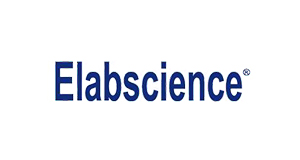Recombinant Mouse ALCAM/CD166 protein (His tag)
Recombinant Mouse ALCAM/CD166 protein (His tag)
Artikelnummer
ELSPDMM100038-100
Verpackungseinheit
100 µg
Hersteller
Elabscience Biotechnology
Verfügbarkeit:
wird geladen...
Preis wird geladen...
Abbreviation: ALCAM;CD166
Target Synonym: AI853494;BEN;CD166;DM-GRASP;MuSC;SC1;CD166 antigen;cluster of differentiation 166;CD166;activated leucocyte cell adhesion molecule;CD6 ligand;Protein DM-GRASP;CD6L;MEMD
Target Species: Mouse
Expression Host: HEK293 Cells
Fusion Tag: C-His
UNIProt ID: Q61490
Background: Activated leukocyte cell adhesion molecule (ALCAM), also named as CD166 and MEMD, is a typeI transmembrane glycoprotein of immunoglobulin superfamily, which mediates homotypic and heterotypic interactions between cells. ALCAM interacts with high affinity with CD6 molecule but weaker homotypic (ALCAM–ALCAM) interactions have also been described. ALCAM–CD6 interactions play an important role in the maintenance of T cell activation, proliferation as well as in formation of immune synapse between antigen-presenting cell and lymphocytes. ALCAM is expressed on a wide variety of cells, particularly on activated lymphocytes, dendritic cells and monocytes, and on various epithelial cell types. It is also involved in multiple processes including embryogenesis, hematopoiesis, angiogenesis, and immune response. While expressed in a wide variety of tissues, ALCAM is usually restricted to subsets of cells in most adult tissues. Recently studies showed ALCAM has prognostic relevance in several human carcinomas, and it has been used as a biomarker for several tumor entities, including melanoma, gynecologic, urologic, and gastrointestinal cancers.
Sequence: Met1-Lys527
Purity: > 95 % as determined by reducing SDS-PAGE.
Formulation: Lyophilized from sterile PBS, pH 7.4.
Normally 5 % - 8 % trehalose, mannitol and 0.01% Tween80 are added as protectants before lyophilization.
Please refer to the specific buffer information in the printed manual.
Endotoxin: Please contact us for more information.
Target Synonym: AI853494;BEN;CD166;DM-GRASP;MuSC;SC1;CD166 antigen;cluster of differentiation 166;CD166;activated leucocyte cell adhesion molecule;CD6 ligand;Protein DM-GRASP;CD6L;MEMD
Target Species: Mouse
Expression Host: HEK293 Cells
Fusion Tag: C-His
UNIProt ID: Q61490
Background: Activated leukocyte cell adhesion molecule (ALCAM), also named as CD166 and MEMD, is a typeI transmembrane glycoprotein of immunoglobulin superfamily, which mediates homotypic and heterotypic interactions between cells. ALCAM interacts with high affinity with CD6 molecule but weaker homotypic (ALCAM–ALCAM) interactions have also been described. ALCAM–CD6 interactions play an important role in the maintenance of T cell activation, proliferation as well as in formation of immune synapse between antigen-presenting cell and lymphocytes. ALCAM is expressed on a wide variety of cells, particularly on activated lymphocytes, dendritic cells and monocytes, and on various epithelial cell types. It is also involved in multiple processes including embryogenesis, hematopoiesis, angiogenesis, and immune response. While expressed in a wide variety of tissues, ALCAM is usually restricted to subsets of cells in most adult tissues. Recently studies showed ALCAM has prognostic relevance in several human carcinomas, and it has been used as a biomarker for several tumor entities, including melanoma, gynecologic, urologic, and gastrointestinal cancers.
Sequence: Met1-Lys527
Purity: > 95 % as determined by reducing SDS-PAGE.
Formulation: Lyophilized from sterile PBS, pH 7.4.
Normally 5 % - 8 % trehalose, mannitol and 0.01% Tween80 are added as protectants before lyophilization.
Please refer to the specific buffer information in the printed manual.
Endotoxin: Please contact us for more information.

 English
English










